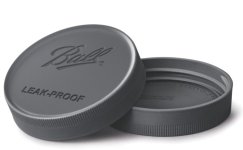plantatron
Rising Star
Hi Nexus!
I had stored some ethyl acetate in some small 250ml mason jars - jars that have a metal lid and a rubber for sealing. I had checked the EA safety link ( Ethyl Acetate: A Sweet-Smelling Safety Hazard - VelocityEHS. ) and read elsewhere that EA is used for rubber "conditioning", so I assumed those jars to be fine.
However, after a couple of weeks, the rubber now had become somewhat light, some changed, and one even broke, see picture.
I now found Chemical Resistant Orings O-rings - saying that "When exposed to ethyl acetate, rubber can experience swelling, cracking, and embrittlement."
So, my questions are:
1) What mason jar lids are fine/recommended with EA?
2) What is causing this rubber "change"? Is EA extracting something from the rubber? I'd like to re-use the EA with the sodium carbonate + brine wash method, but I'm not sure if the washed EA would be safe to use. Probably the two washes would not remove a possibly different solvent/plasticiser(?) ? Also, maybe even if it would be no health risk, would the compound extracted from the rubber mess with precipitation of our favourite molecules?
I had stored some ethyl acetate in some small 250ml mason jars - jars that have a metal lid and a rubber for sealing. I had checked the EA safety link ( Ethyl Acetate: A Sweet-Smelling Safety Hazard - VelocityEHS. ) and read elsewhere that EA is used for rubber "conditioning", so I assumed those jars to be fine.
However, after a couple of weeks, the rubber now had become somewhat light, some changed, and one even broke, see picture.
I now found Chemical Resistant Orings O-rings - saying that "When exposed to ethyl acetate, rubber can experience swelling, cracking, and embrittlement."
So, my questions are:
1) What mason jar lids are fine/recommended with EA?
2) What is causing this rubber "change"? Is EA extracting something from the rubber? I'd like to re-use the EA with the sodium carbonate + brine wash method, but I'm not sure if the washed EA would be safe to use. Probably the two washes would not remove a possibly different solvent/plasticiser(?) ? Also, maybe even if it would be no health risk, would the compound extracted from the rubber mess with precipitation of our favourite molecules?


